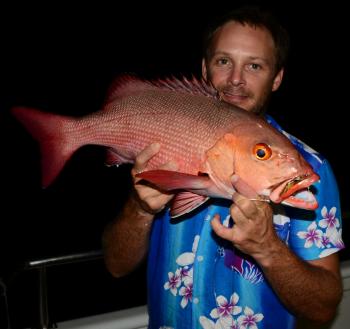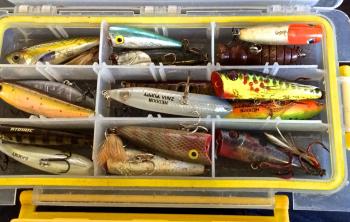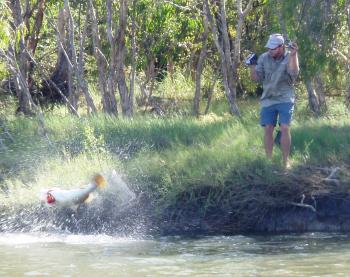Nearing the end of Cape York’s wet season, anglers can only hope for a continuation of the great weather experienced throughout February and March. After a season that was meant to be above average for cyclones, calm conditions offshore have led to some great fishing on both sides of the Cape.
Fishers getting out wide on the east coast have scored good captures of reef fish, especially in the form of coral trout and largemouth nannygai over deeper grounds. Spanish and scaly mackerel will be typically thick around reef entrances and smaller yellowfin tuna will be on the outside edges of outer reefs.
The east coast crayfish season got off to a pretty good start and mixed reports were coming in from the Torres Strait region after the opening in March. The crays are an interesting bio-indicator of wider fishery health up and down the east coast and into the Straits. They feed on shellfish around the medium to shallow reef areas of coral reef, migrating in large numbers under the right conditions.
After last year’s nasty coral bleaching event, we all hope there’s no repeat and a dramatic recovery in some of the worst affected areas. Unfortunately devastation in the form of cyclones, coral bleaching and other natural events do not discriminate between marine park zonings. In a magical world, green and yellow zones would protect the reef from such events. In reality, each reef is just as susceptible.
Great early season pelagic fishing and shallow reef action have been seen on the mid-west coast. Reports have been of schooling black jew, awesome golden snapper and the ever-reliable queenfish, trevally and mackerel. Flat conditions will allow anglers to sneak further offshore to chase reds and larger reef species, longtail tuna and good numbers of mackerel on the contour lines.
A lack of flood run-off will not have immediate effects on the barra fishing, however these effects will be felt later in the year and in the seasons to come. A return to La Nina and substantial flooding rains are needed to supercharge the mighty west coast rivers and ignite the floodplains into action.
Saratoga and barramundi use the floodplains, lagoons and billabongs to grow their young. All the tiny frogs, insects, reptiles and terrestrial critters, which make their way into these areas become potential prey items. Without these nursery areas receiving regular inflow from floodwaters, they become stagnant and lifeless.
Let’s hope for some late season rains and great barra fishing throughout April. This is a month that can really turn it on, especially in the upstream sections where smaller feeder systems converge with the main river. Understanding converging currents, back eddies and the places to cast around large drains are key factors to success in April.
• For information on remote charter operations for tailored fishing adventures, please email Tim on --e-mail address hidden--
Reads: 1798

The jacks continue biting throughout the night, even in warmer months. 
A beaut female Maori wrasse ready for release. 
One angler’s selection of run-off barra poppers. 
April barra fishing at its finest. 
Jacks in spring-fed creeks are the stuff of dreams. Matched Content ... powered by GoogleLatest Articles

Most Popular |
|---|



